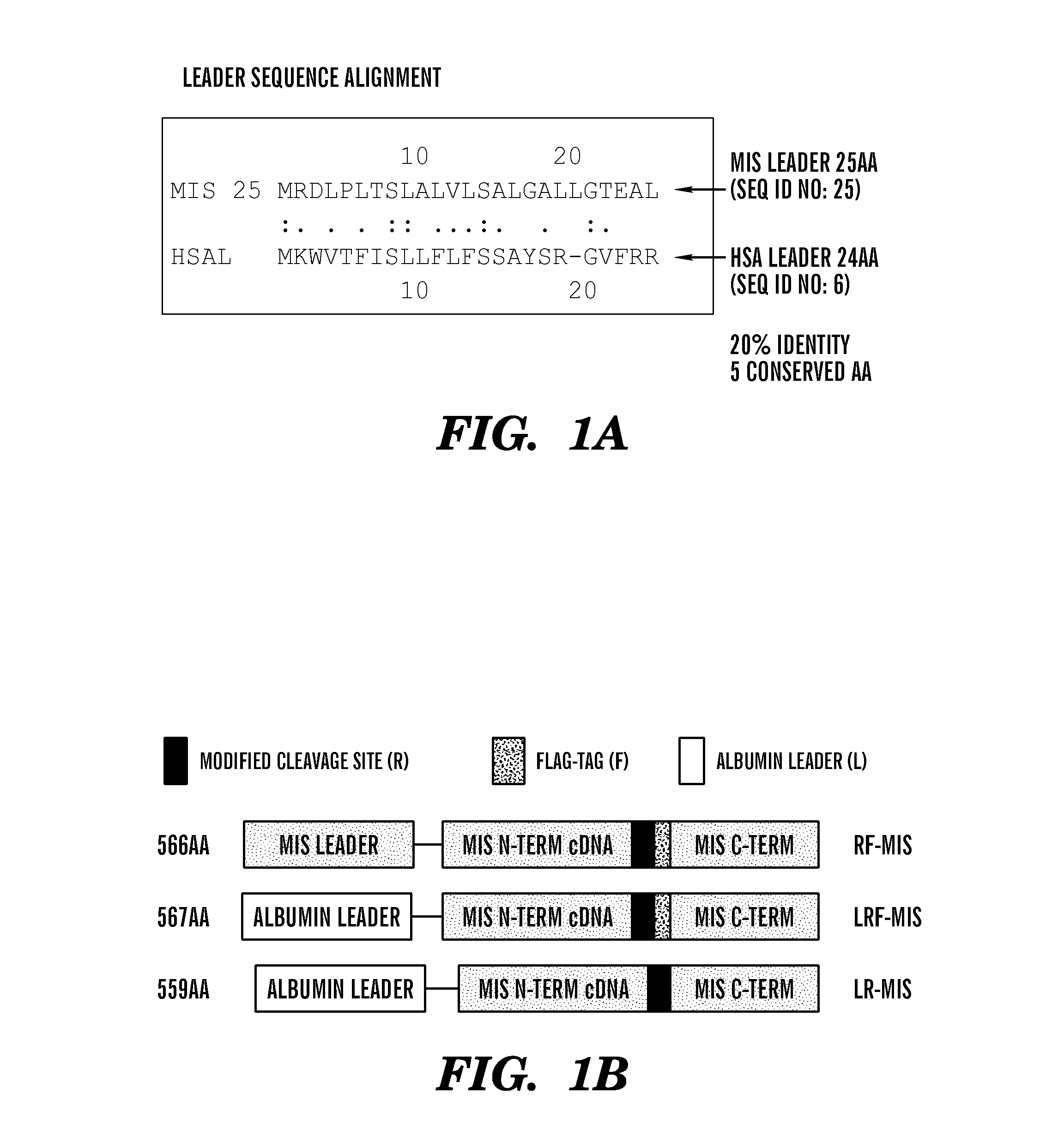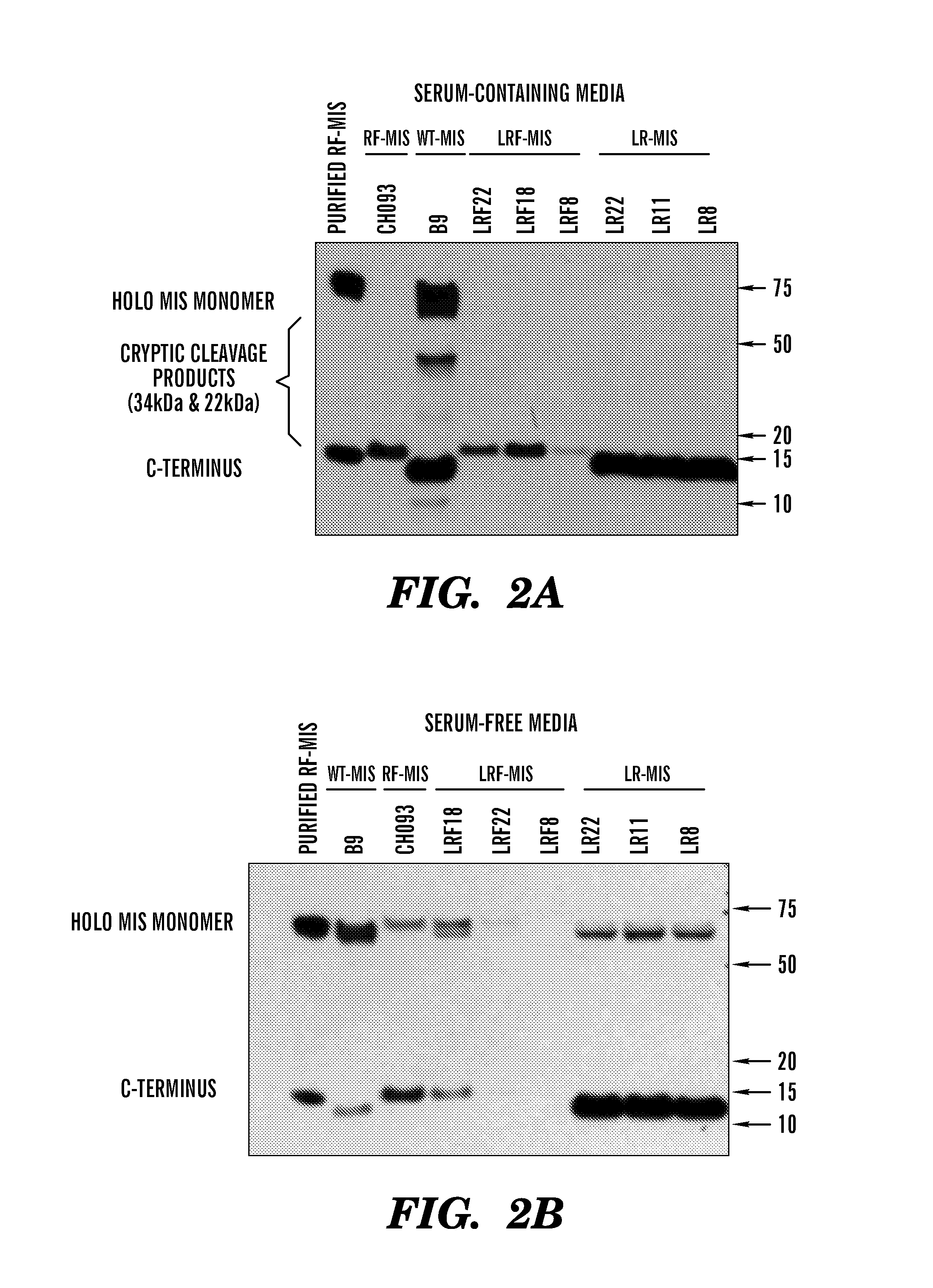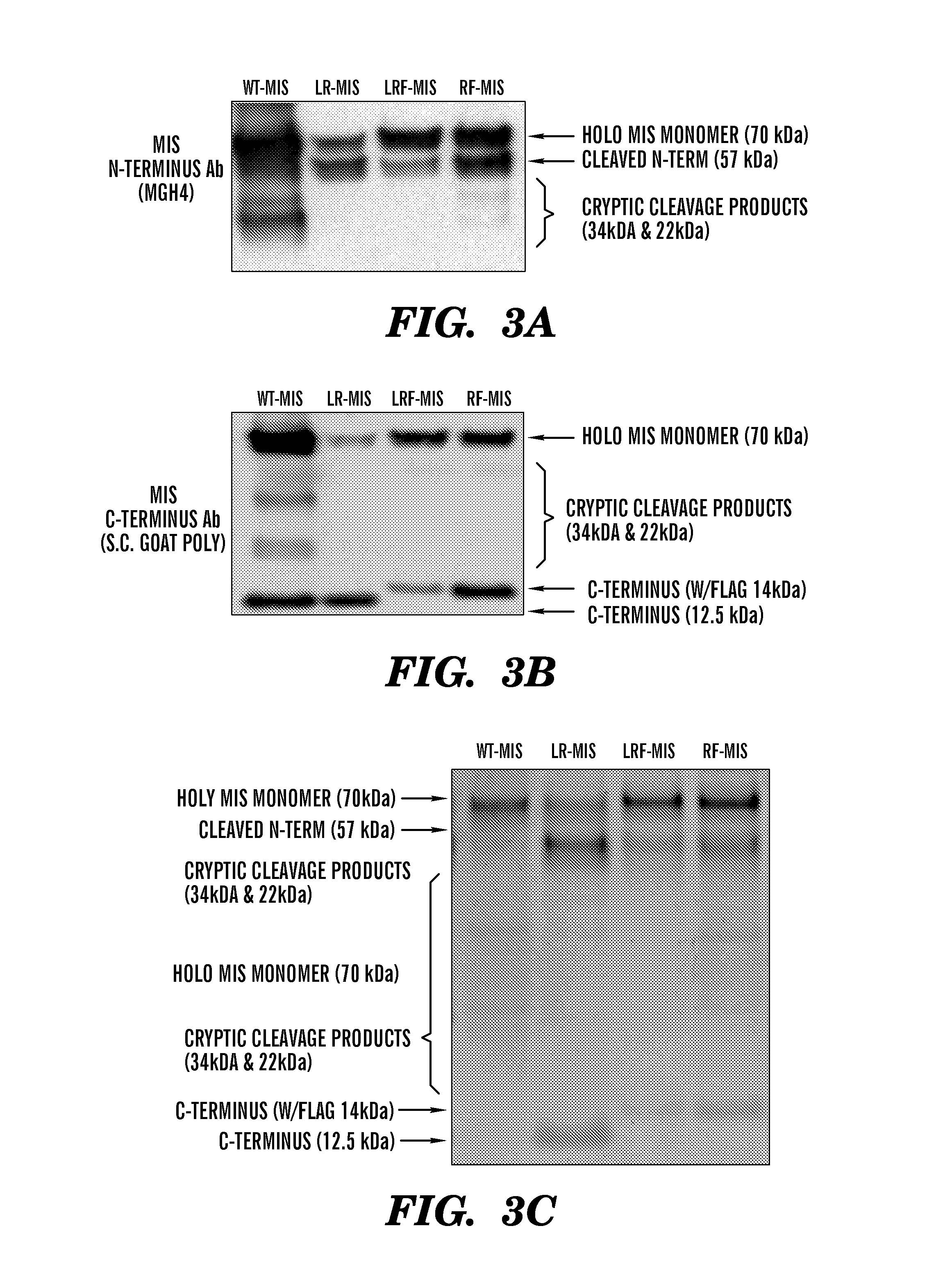Uses of modified mullerian inhibiting substance (MIS) proteins for the treatment of neurodegenerative diseases
- Summary
- Abstract
- Description
- Claims
- Application Information
AI Technical Summary
Benefits of technology
Problems solved by technology
Method used
Image
Examples
example 1
[0480]Purification of Mullerian Inhibiting Substance (MIS) protein for preclinical efficacy (Pieretti-Vanmarcke et al. 2006), has predominantly been done from conditioned media from CHO cells transfected with a genomic clone (Cate et al. 1986). The media was then immunoaffinity purified (Ragin et al. 1992) using a mouse monoclonal antibody (Hudson et al. 1990) or purified by serial chromatography (Lorenzo et al. 2002). Biologic activity was detected in an embryonic organ culture Mullerian duct regression assay (Donahoe et al. 1977) and immunoactivity detected by an ELISA (Hudson et al. 1990) using monoclonal and polyclonal antibodies raised to human MIS. The transfected CHO cells were subsequently adapted to serum free conditions and suspension culture (MacLaughlin / Stafford / Dean, Donahoe unpublished), clonally selected, scaled, and purified as above. Western analysis confirmed 25-30% cleavage to yield the homodimerized C-terminus bioactive moeity which was held in noncovalent associ...
example 2
Design of Novel Recombinant MIS Constructs, and Isolation of CHO Clones
[0483]The inventors have developed new constructs using the human cDNA sequence of MIS to improve upon the original wild type (WT) genomic MIS constructs in an effort to increase production of recombinant MIS with a sequence size more amenable to other applications such as viral gene therapy. Three modifications were evaluated herein: a Q425R amino acid substitution in the c-terminal maturation cleavage site annotated as “R”, the addition of a FLAG-tag on the N-terminus of the c-terminal mature peptide at amino acid (AA) position 428 annotated as “F”, and a substitution of the endogenous MIS leader peptide with the human serum albumin leader (HSAL) peptide directly upstream of AA position 0 annotated as “L” (Table 2 and FIG. 1A). The resulting constructs which incorporate these modifications are thus referred to as RF-MIS (566AA), LRF-MIS (567AA) and LR-MIS (559AA) (FIG. 1B). The 1AA difference between RF-MIS and...
example 3
[0499]MIS was initially cloned by the inventors. The inventors, together with colleagues in New Zealand, subsequently observed that MIS and its Type I (MISRI) and Type II (MISRII) receptors are expressed in motor neurons (Wang et al, 2005, PNAS, 2005; 102; 16421-16425) and that MIS directly enhances survival of motor neurons in vitro. Moreover, it was subsequently reported that knockout of male specific MIS or its Type II receptor reduced the number of male motor neurons, which are normally a third higher than in the female (Wang et al, 2009, PNAS, 106(17); 7203-7208).
[0500]Accordingly, the inventors demonstrated that the modified MIS as disclosed herein would have a salutary effect in amyotrophic lateral sclerosis (ALS) mice harboring the SOD1G93A mutation. ALS is a progressive, degenerative disorder affecting motor neurons in the spinal cord, brain stem, and motor cortex, resulting in muscle atrophy, paralysis, and death by respiratory failure, with survival of less than five year...
PUM
| Property | Measurement | Unit |
|---|---|---|
| Fraction | aaaaa | aaaaa |
| Fraction | aaaaa | aaaaa |
Abstract
Description
Claims
Application Information
 Login to View More
Login to View More - R&D
- Intellectual Property
- Life Sciences
- Materials
- Tech Scout
- Unparalleled Data Quality
- Higher Quality Content
- 60% Fewer Hallucinations
Browse by: Latest US Patents, China's latest patents, Technical Efficacy Thesaurus, Application Domain, Technology Topic, Popular Technical Reports.
© 2025 PatSnap. All rights reserved.Legal|Privacy policy|Modern Slavery Act Transparency Statement|Sitemap|About US| Contact US: help@patsnap.com



